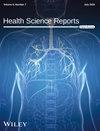Prevalence of Babies Born With Neural Tube Defects and Geospatial Mapping of Therapeutic Services: A Systematic Review
Abstract
Background and Aims
Neural tube defects (NTDs) are an important global health concern with high morbidity and mortality. Enhancing access to healthcare for children born with NTDs is crucial for improving health systems and service delivery.
Methods
We conducted a systematic review to assess the global prevalence of NTDs and the accessibility of healthcare services. Our search spanned databases like PubMed, EMBASE, and Scopus, focusing on NTD prevalence, healthcare service mapping, and access barriers. We followed a standardized data extraction process, and the study is registered with PROSPERO (CRD42023425843).
Results
From 3067 records, 65 studies met our inclusion criteria, mainly focusing on newborns. The study durations range from 6 months to 40 years. The NTD prevalence was between 0.4 and 215.13 per 10,000 births, with Spina Bifida, Anencephaly, and Encephalocele being the most common. The African region was the WHO region with the highest prevalence, while the Western Pacific Region had the lowest prevalence. One study used geospatial mapping to identify healthcare access barriers.
Conclusion
Our study revealed wide disparities in the prevalence rates of NTDs with the African region having the highest prevalence. Geospatial mapping was not used to assess access to healthcare services for children born with NTDs in almost all the studies. This underscores the global challenge of access to surgical care for children born with NTDs and the need for strengthening healthcare services in settings with high prevalences.


 求助内容:
求助内容: 应助结果提醒方式:
应助结果提醒方式:


